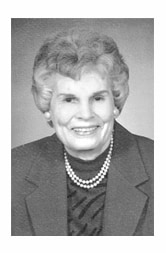Every once in awhile I like to share a story from the past, even the recent past that people may not have read at the time or just recount the story that may have been forgotten.
This week I am repeating a story I covered in October, 1995 when the 46-acre site was being checked before being cleared for construction of the Cardington Yutaka Technologies, Inc. plant at the southeast edge of the village.
Tom Seif, then the president of the manufacturing firm, said he and his associates discovered a worn stone used a century ago for grinding purposes. It covered a 15 foot deep brick lined wall. The three-foot-wide well widened to eight feet at the bottom and had about ten feet of water in it. Each of the bricks had the word ‘Wyandot” printed on it.
A pipe near the well’s bottom gave indication there had once been a pump to bring up the water but careful searching has not revealed any sign of their having been a structure nearby,although they did find a couple runs of drainage clay. The well’s location at the northwest corner of the new building site is about one-quarter mile off of the site’s entrance at U.S. 42.
CYT officials had hoped to make the well a permanent historical attraction by converting it to a wishing well but the EPA suggested it be sealed. Seif said, “The top will be put back and we’ll mark it.”
Later, during a solemn ceremony on Oct.23, 1995, the well was blessed by Wyandot Native American Chief Eagle Bear Burling of Upper Sandusky.
The Japanese, who were constructing the new plant, and the Native Americans believe that when a natural life sustaining element from the ground is shut off, it must be blessed as it is returned to the ground for others to use. Water from the ground is a blessing to mankind and a necessity to life, explained Eagle Bear Burling.
Shutting off such a source sends it back to the earth to be used by others elsewhere. In a brief ritual the chief blessed it with four elements: tobacco, used in blessing the ground in four directions, which represent the four stages of life, beginning with east and ending in the north; garlic, “the essence of us all;” and three cedar ages — young, representing the future, old, the past and middle cedar representing the present.
Horse grass was used “in remembrance of us all.”
Using sign language to interpret it, Eagle Bear Burling closed the ceremony with the Lord’s Prayer. Following the blessing ceremony, the chief presented a Red Fox hide to his Japanese friends “in friendship” as “the greatest gift I can give.”
I learned from the county recorder’s and engineer’s offices the acreage was first owned by Robert Bunker in 1857 and in 1871 it was split between Elizabeth McKeowen and Margeret Kester. In 1901 Kester was owner of 21 of the acres; E. McKeowen, ten and Robert McKeowen, 12 acres. Later owners were Susan Lamprecht, Karl Lamprecht and Sislers who sold it to CYT.
Seif said he had talked to several “old timers” but no one remembers there ever being a house or building on that site. So the mystery continues.
50 years ago, October 1967: Pam McClintock, daughter of Mr. and Mrs. Lawton McClintock, graduated from Cleveland Junior College as a laboratory technician.
The Sohio service station being constructed on the Cardington square, was scheduled to be completed by Oct. 10.
Cardington Village council, with Mayor Hayes Ulrey casting the tie breaking vote, approved the contribution of $800 to the Morrow County Airport authority to be used for the purchase of land for construction of an airport.






